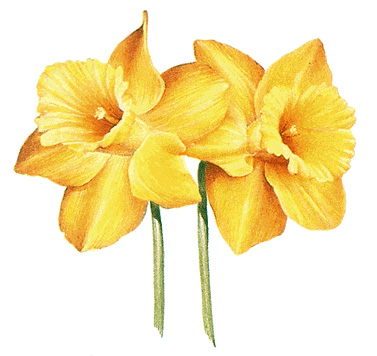Daffodil is a type of garden flower with petals surrounding a cup-shaped center. Daffodils are usually white or yellow, but they may also be shades of cream, orange, or pink. Daffodils are native to Europe and northern Africa, but they can adapt to a wide range of growing conditions. Some daffodils are also known as jonquils.

Growers have developed thousands of cultivars (cultivated varieties) of daffodils. The best-known cultivars are those of the common daffodil, also called the trumpet narcissus. This daffodil’s trumpet, or cup, is equal to or longer than the petals that surround it. The common daffodil produces only one flower on each stem.
Daffodils grow from bulbs, which are planted in the fall. In flower beds, large bulbs should be planted about 2 to 6 inches (5 to 15 centimeters) apart and about 4 to 6 inches (10 to 15 centimeters) deep. Smaller bulbs can be placed closer together and somewhat less deep. Daffodils have five or six narrow leaves that grow up to 16 inches (41 centimeters) long. Most bulb growth occurs after flowering. Thus, the leaves, which make food for growth, should not be removed for at least 10 weeks after the flowers have faded. Daffodil bulbs are poisonous if eaten.
See also Narcissus.
